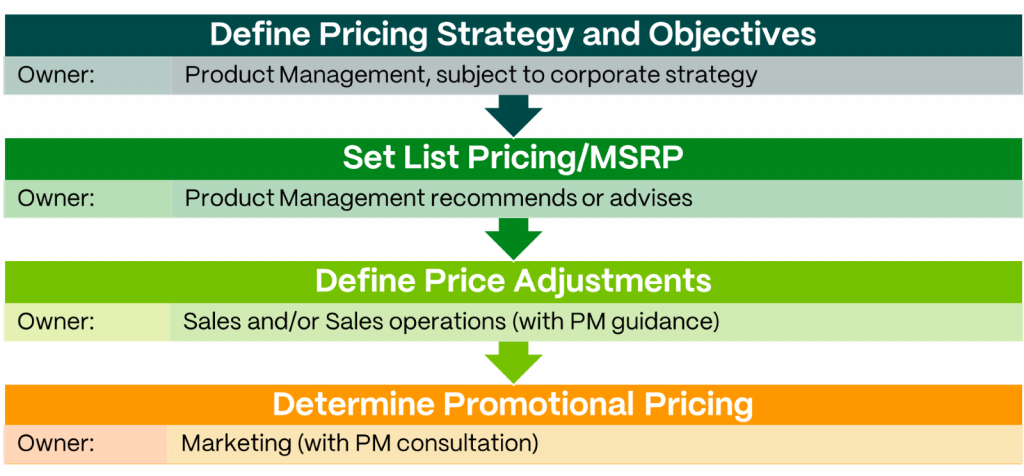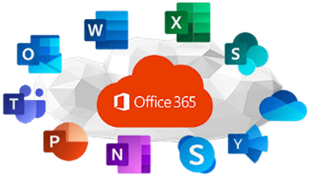
Product Management Predictions for 2026: The New User, New Metrics, and New Rules
Product management isn’t breaking. But many of the assumptions we’ve built it on are. These product management predictions for 2026

One of the main objectives of a Product Manager is to maximize the Product’s value for their organization, customers, stakeholders and partners. If we look at the basic equation around value, we see that we cannot define value without a clear understanding of its cost to the consumer, including its price.

Now “Cost” can consist of more than just the product price. In many cases, buying something has additional costs like the need to pay for ongoing service, maintenance, implementation, and upgrades. But for most consumers, the most immediate component of the cost is the price of the product. Logic follows that a Product Manager cannot perform their role of delivering value to either the business or the consumer, without having a role in the pricing strategy.
Pricing by its core nature is an involved process and a product generally has more than one price, and in some cases, can have many prices. There is the notion of a “list price” or what is sometimes referred to as MSRP or “Manufacturer’s Suggested Retail Price”, but there are a host of adjustments that are made to this price before it is determined what the customer actual pays to acquire the product. There are volume adjustments, channel adjustments, location considerations, promotions, timing and payment discounts and, if there are distributors or resellers involved in the process, the company that creates the product may have limited control over what the distributing parties end up charging the end consumer.
Moreover, there are laws and regulations around pricing in many jurisdictions that reduce the flexibility a company can have in determining the price of their product. We don’t mention all this complexity around pricing to make pricing even more intimidating. But it is necessary for multiple roles and various perspectives to determine a price or set of prices. Even if the Product Manager is the clear owner of the pricing of a product, they will need to seek input and insight from a variety of stakeholders inside and outside their organization to properly price their product. These are all considerations that must be made in formulating the product pricing strategy.
Unfortunately, we see that many organizations leave their Product Managers out of decisions around pricing the product. If we return to the notion that a Product Manager owns the value of a product and that value is dependent upon the price of the product, then this is obviously a foolhardy decision.
When it comes to product pricing and pricing strategy, the Product Manager’s role sits between the three disciplines of product marketing, sales, and customer success. Their level of responsibility will inevitably vary depending on a company size, industry and path to bringing their products to customers. However, organizations can and should benefit from the Product Manager’s insights on what the pricing strategy should look like, and what value customers will gain from the product.
A simplistic product pricing model for defining a Product Managers role in pricing could be as follows:

The Product Manager would work with leadership and executives on product and price management to define what role the product plays in the overall corporate strategy and the impact that strategy has on the approach to pricing for the product. Is the product priced at a premium versus competition, in line with similar products, or is it a value offering? From that strategy and an understanding of the product’s customers and success in the market, the Product Managers propose a standard or list price for the product.
When it comes to determine the pricing a specific customer pays for that offering – particularly in B2B scenarios where the price a customer pays is often subject to a negotiation – the sales or sales operations team often has final say in determining how that “list price” is adjusted for a specific customer. Even then, the Product Manager can benefit the sales team with insight into scenarios beyond the individual sale such as how competitors or regulators impact the decision and the benefits of more consistency in product pricing and not discounting for each account.
Lastly, there are opportunities for timing or promotional incentives to drive sales of a product – particularly as we look across product offerings. This is largely the decision of the marketing team – again with consultation from the Product Manager, who will have a better understanding of the overall pricing strategy of the product and how much of a role discounting or promotion should play into that strategy.
As noted above, Product Management is largely responsible for defining the strategy for pricing the product and plays a primary role in determining that MSRP or list pricing of the product. So, how does a Product Manager go about determining that strategy? Think about pricing strategies as the navigational tools steering a ship through uncharted waters. Each strategy acts as a compass directing the course of the ship (product) along diverse routes, all with the goal of reaching the island of profitability. While not exhaustive, there are seven product pricing approaches that either alone or in combination, cover the most common pricing strategies:
1. Cost BasedPricing
Here the price of a product or service is determined by calculating the total cost of production and then adding a markup to cover desired profit margins. This approach focuses on the expenses incurred in manufacturing, distributing, and selling a product, such as raw materials, labor, and overhead costs. The markup is a percentage added to the total cost to ensure profitability. Cost-based pricing does not directly consider factors like market demand or customer perception but centers on covering costs and generating profits based on the production expenses.

Oracle Corporation utilizes a cost-based pricing strategy for its extensive range of enterprise software products and services. As a provider of database management systems, cloud solutions, and various business applications, Oracle’s pricing model is influenced by the costs incurred in developing, maintaining, and enhancing its sophisticated software offerings.
2. Value-based pricing
This is a strategic approach that determines the price of a product or service based on the perceived value it delivers to the customer. This strategy focuses on understanding the customer’s willingness to pay for the benefits and unique features offered, rather than production costs or competitor pricing. Implementing a value-based pricing strategy involves a deep understanding of customer needs, effective communication of the product’s value proposition, and the ability to capture the value created for customers.
Example: Tesla

Tesla follows a value-based pricing model for its electric vehicles. The prices are higher than many traditional vehicles, but customers are willing to pay the premium for the innovative electric technology, superior performance, and the brand’s commitment to sustainability.
3. Penetration Pricing:
Penetration pricing is a strategy designed to quickly capture a significant market share by offering a product at an initially lower price than its perceived market value. This approach is particularly effective in industries where competition is intense, and a quick market entry is crucial. The lower initial price encourages widespread adoption, creating brand awareness and customer loyalty. However, it may lead to challenges in maintaining profitability in the long term, and careful consideration of the eventual price increase is necessary.
Example: Adobe Creative Cloud

Adobe initially introduced Creative Cloud with a subscription-based model at a relatively lower price point compared to their traditional software licenses. This strategy allowed Adobe to quickly attract a broad user base seeking access to their suite of creative tools. As the user base expanded, Adobe could then adjust subscription prices or introduce premium features, effectively leveraging the initial penetration pricing to establish itself as a dominant player in the creative software market.
4. Skimming Pricing
Skimming pricing is the opposite of penetration pricing – setting a high initial price for a product, targeting early adopters and customers willing to pay a premium for innovation or exclusivity. This strategy is particularly effective for products with unique features or advanced technology. Over time, as the market demand among early adopters is satisfied, the price is gradually lowered to attract a broader audience. Skimming pricing allows companies to capitalize on the willingness of certain customers to pay a premium for the latest and most innovative products.
Example: Apple

Apple’s pricing strategy for launching new iPhone models often involves skimming pricing. The latest iPhone is introduced at a high price point, catering to early adopters, and the price decreases over time as new models are released.
5. Freemium Models:
The freemium model is a pricing strategy that offers a basic version of the product for free, aiming to attract a large user base. Users are then enticed to upgrade to a premium (paid) version, which includes additional features or advanced functionality. This approach is commonly used in software and digital services, allowing users to experience the product’s core functionalities before committing to a paid subscription.
Example: Spotify

Spotify, prices its offering so users can access a free version with ads and limited features, while the premium version offers an ad-free experience, offline listening, and enhanced audio quality for a subscription fee.
6. Dynamic Pricing:
Dynamic pricing is a flexible strategy where the price of a product is continuously adjusted based on various factors such as demand, supply, competitor pricing, and customer behavior. This approach allows companies to adapt to changing market conditions in real-time, optimizing pricing for maximum revenue or market share.
Example: Uber

Uber utilizes dynamic pricing, often known as surge pricing. During periods of high demand, such as rush hours or special events, Uber adjusts its pricing to encourage more drivers to be available, balancing supply and demand. This dynamic pricing model benefits both drivers, who earn more during peak times, and riders, who can still access transportation services despite increased demand.
7. Geographic pricing strategy
Geographic pricing strategy involves adjusting the price of a product based on the geographic location of the customer. This approach recognizes that different regions may have distinct market conditions, consumer behaviors, and economic factors that warrant customized pricing. Implementing a geographic pricing strategy allows businesses to be more responsive to local market dynamics and enhance competitiveness in diverse regions.
Example: Microsoft Office 365

Microsoft often adjusts the pricing of its Office 365 subscription plans based on geographic locations. Prices for the same plan may differ between countries or regions, reflecting variations in market conditions.
There are many companies that posit that Product Management has little or no role in defining the pricing of a product. In these companies, there is a perception either that the sales team has the relationship with the customer and knows their current pain points, price tolerance, etc. or that Finance has a great sense of total costs and can help set a price that maximizes company profitability. If you are in an organization, what can you do as a Product Manager to get a seat at the pricing table?
Your job as a PM is to aggregate all this information and make data-based decisions. Information from Sales, Marketing, Finance, and Operations are all relevant to making a proper decision. In addition, you will have your own customer insight data from focus groups, meetings with customers, competitive analysis, and other market research. It is your job to work with all the teams to consolidate input and data and bring the analysis to the right people so they see you as a thought partner and collaborative person to work with on pricing your product. Go out of your way to have regular discussions with these stakeholders about your product, its value proposition and pricing approaches. Share how pricing decisions impact your product and ask when and how pricing decisions are made. Providing data driven insights will elevate your credibility and open the door for you to be an active member in pricing decisions regarding your product.
Good luck, and get a seat at that table!


Product management isn’t breaking. But many of the assumptions we’ve built it on are. These product management predictions for 2026

If you’ve ever worked with early-stage founders, you know this: product market fit for startups is rarely lost in

If you’ve ever lived through a product launch, you know the truth: go-to-market is a marathon you’re forced to